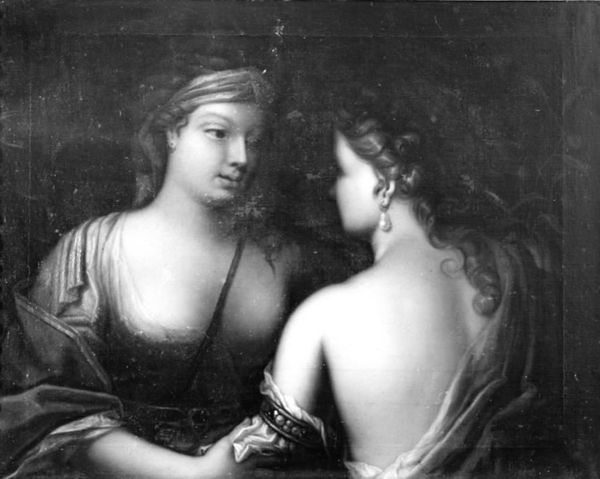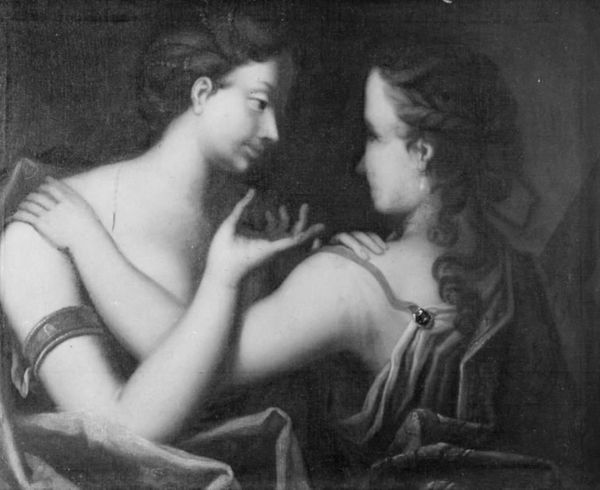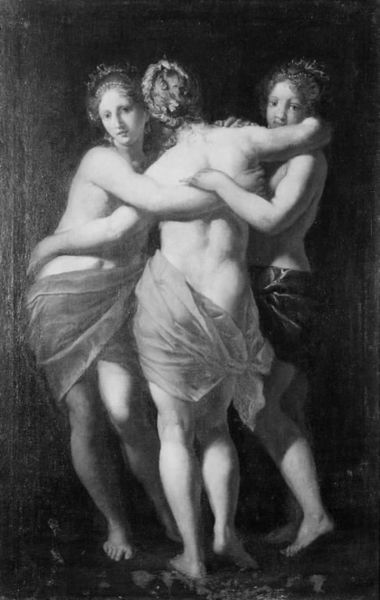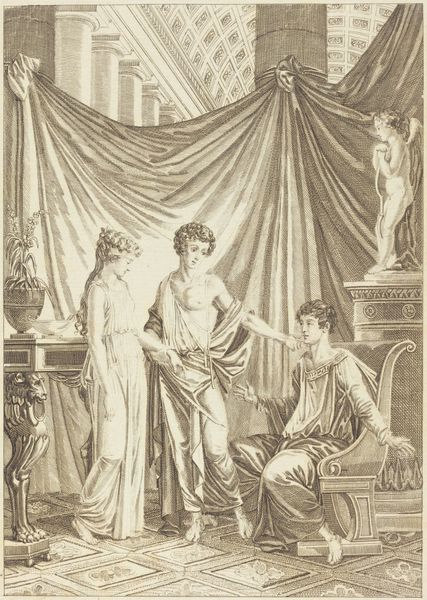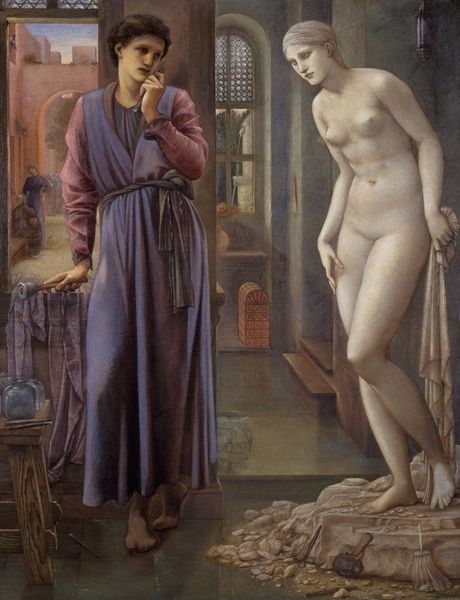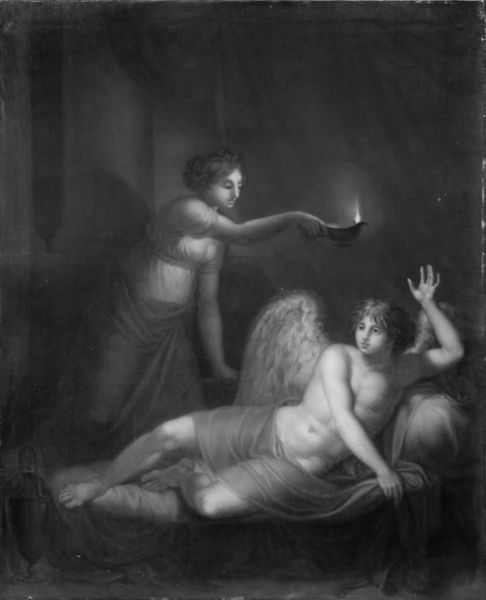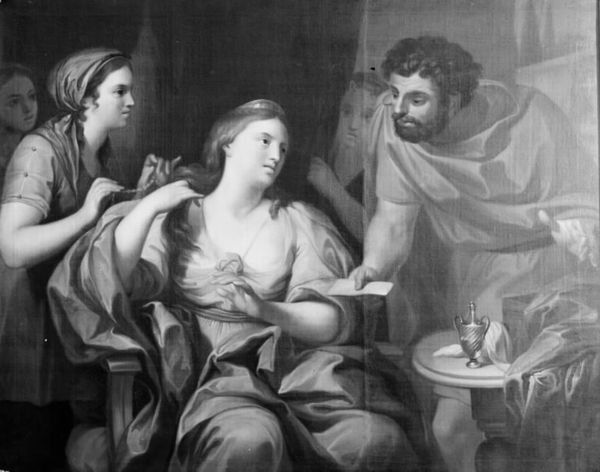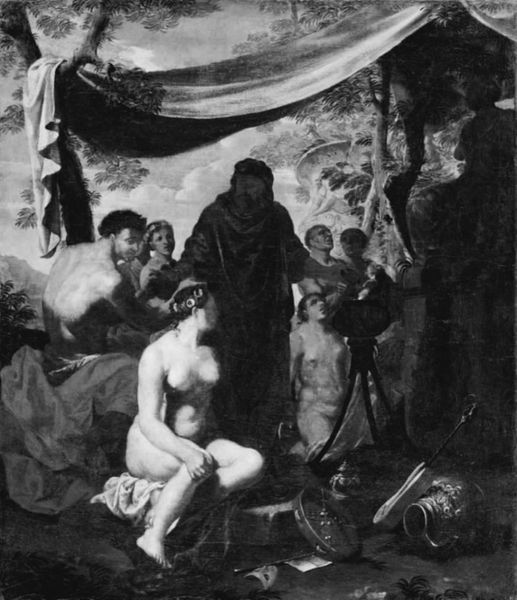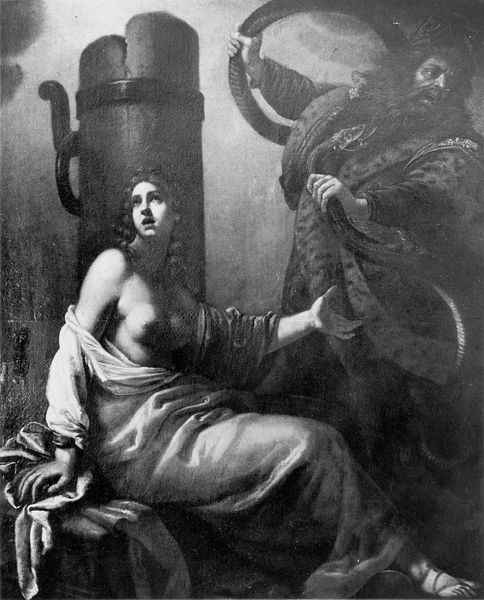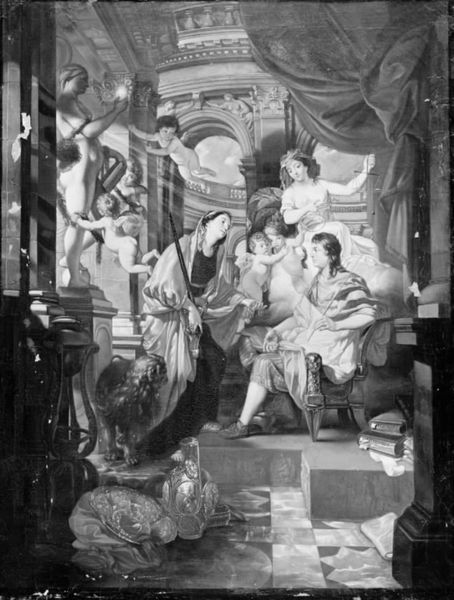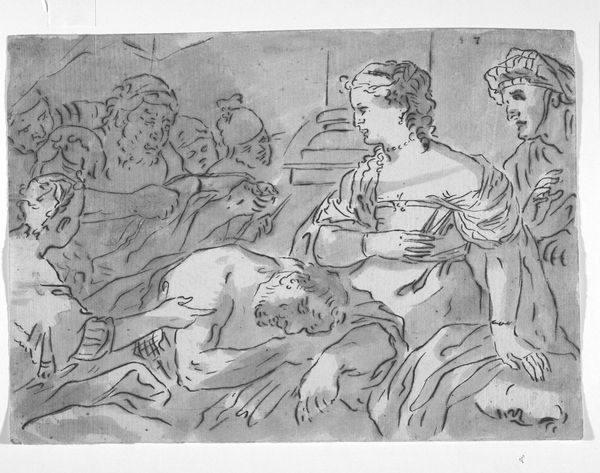
Elektras møde med Orestes og Pylades efter Agamemnons død 1812 - 1862
0:00
0:00
painting, canvas
#
neoclacissism
#
black and white photography
#
portrait image
#
painting
#
figuration
#
canvas
#
black and white
#
history-painting
#
monochrome
#
monochrome
Dimensions: 231 cm (height) x 182 cm (width) (Netto)
Editor: Carl Goos created this canvas, “Elektra’s meeting with Orestes and Pylades after Agamemnon's death," sometime between 1812 and 1862. It's rendered in monochrome, giving it a classical feel. It also depicts a heavy and sombre tone. How do you read this piece? Curator: Well, I see the constraints of Neoclassicism in its methods and materials of production, where history painting demanded immense preparation. Think about the social context; history paintings validated established political and cultural norms, often under the patronage of wealthy elites and institutions. What labor practices were involved? Who was allowed access to knowledge, materials and resources to create something like this? Editor: I see what you mean. The choice of a canvas as a support and oil paint is indicative of a specific historical moment, where those were established as the art world's mediums of power, yet, the composition here seems a little...static, almost like a theater set, which is in a sense fabricated labour for the enjoyment and moral instruction of an audience. Curator: Precisely. Notice how the figures’ drapery emphasizes the texture of the material and relates to this performative production. What impact might that have on our understanding of this narrative and Goos' practice? Editor: I hadn’t thought about it like that before. Considering it's a painting of Elektra meeting Orestes after Agamemnon’s death it makes you think, did Goos use classical narratives to examine social structure, or was the social structure of the time a material for this historical art making? Curator: Both are plausible. We could also explore how class dynamics are subtly expressed in the material conditions. The type of pigment available, the cost of the canvas, the tools utilized -- each contributing to a material history of this piece and it's position within the context of labour and materiality. Editor: Right, every little mark on the canvas would signify that historical process. Thanks for opening my eyes to this. I'll definitely think about the labor involved in these paintings going forward. Curator: My pleasure. Remember to always examine who has the power to produce and whose stories get told through these materials and practices.
Comments
No comments
Be the first to comment and join the conversation on the ultimate creative platform.
